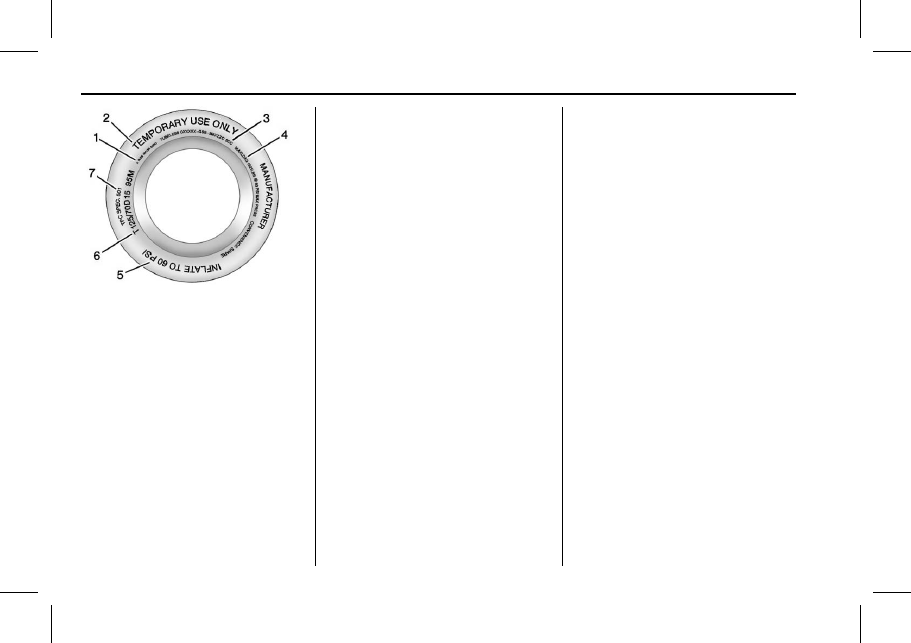Buick Verano (2017 year). Instruction - part 17

Buick Verano Owner Instruction (GMNA- Localizing-U.S./Canada-10122753) -
2017 - crc - 5/16/16
262
Vehicle Care
Compact Spare Tire Example
(1) Tire Ply Material
:
The type
of cord and number of plies in
the sidewall and under the tread.
(2) Temporary Use Only
:
The
compact spare tire or temporary
use tire should not be driven at
speeds over 80 km/h (50 mph).
The compact spare tire is for
emergency use when a regular
road tire has lost air and gone
flat. If the vehicle has a compact
spare tire, see Compact Spare
Tire 0 285 and If a Tire Goes
Flat 0 278.
(3) Tire Identification Number
(TIN)
:
The letters and numbers
following the DOT (Department
of Transportation) code are the
Tire Identification Number (TIN).
The TIN shows the
manufacturer and plant code,
tire size, and date the tire was
manufactured. The TIN is
molded onto both sides of the
tire, although only one side may
have the date of manufacture.
(4) Maximum Cold Inflation
Load Limit
:
Maximum load that
can be carried and the
maximum pressure needed to
support that load.
(5) Tire Inflation
:
The
temporary use tire or compact
spare tire should be inflated to
420 kPa (60 psi). For more
information on tire pressure and
inflation see Tire
Pressure 0 266.
(6) Tire Size
:
A combination of
letters and numbers define a
tire's width, height, aspect ratio,
construction type, and service
description. The letter T as the
first character in the tire size
means the tire is for temporary
use only.
(7) TPC Spec (Tire
Performance Criteria
Specification)
:
Original
equipment tires designed to
GM's specific tire performance
criteria have a TPC specification
code molded onto the sidewall.
GM's TPC specifications meet or
exceed all federal safety
guidelines.